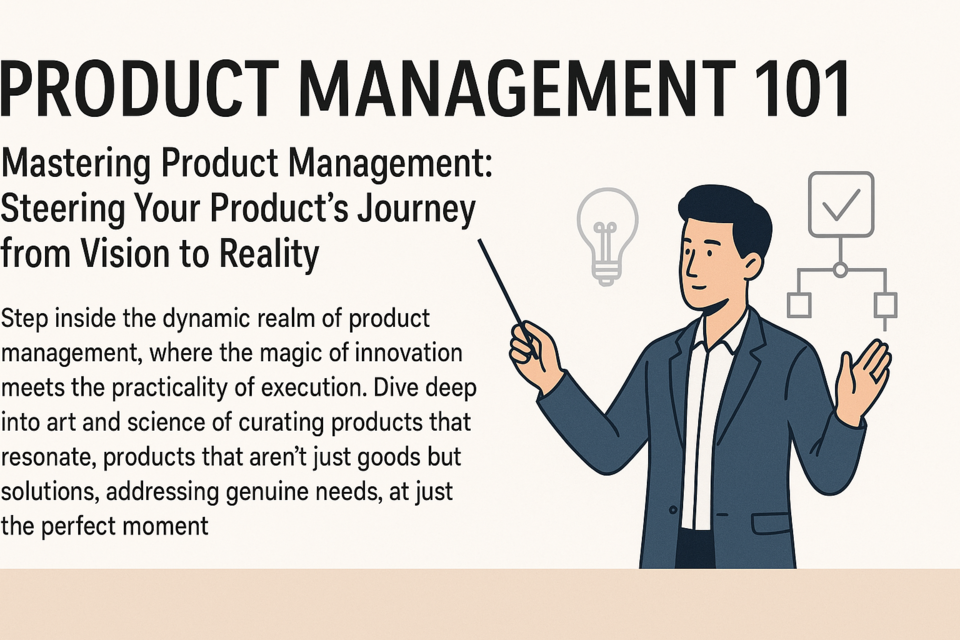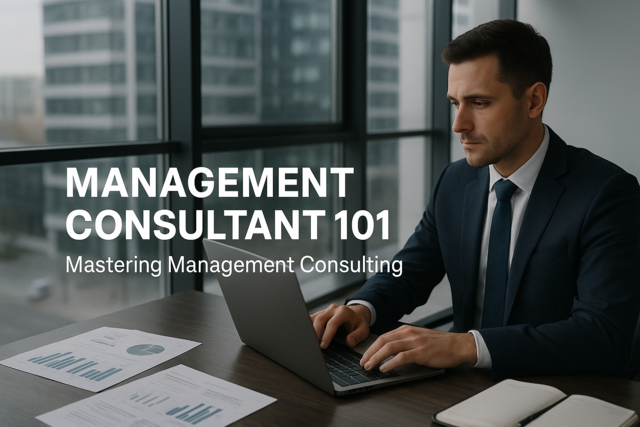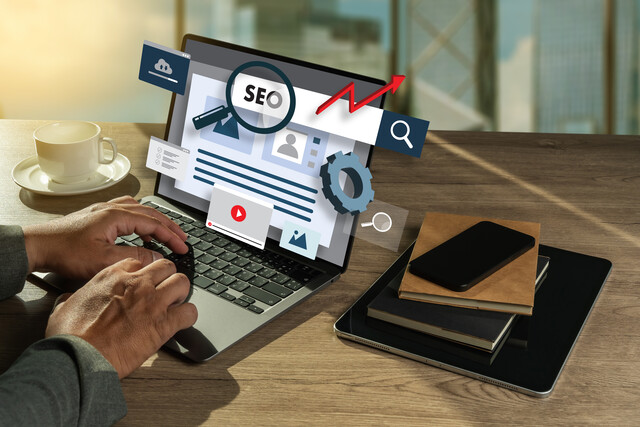The Balance Sheet Overview:
The balance sheet is one of the key financial statements. The balance sheet is also referred to as the statement of financial position. The simplest way understand to balance sheet is to think of it like a snapshot of a company's financial position at a particular point in time. The balance sheet is also a logical starting point for assessing a company's current financial strength. The balance sheet is segmented into three separate sections: assets, liabilities, and stockholders equity. This financial statement gives information to the reader regarding the resources that are available to the management team and the claims that are taken against those resources by creditors as well as shareholders. There can be multiple types of balance sheets. There is the traditional balance sheet, the consolidated balance sheet, and the condensed balance sheet.
- You should be able to understand how the balance sheet is organized
- You should be able to identify individual and specific components that make up the balance sheet
- You should be able to understand and explain how debt and equity both affect the financial strategy and financial risk of a business.
- You should be able to prepare and interpret a common-size balance sheet and the trends that can be inferred from a common-size balance sheet.
Types of Balance Sheets:
Traditional Balance Sheet- The traditional balance sheet is designed to serve as a snapshot of the financial position of a business at a given point in time. The traditional balance sheet will be made up of three sections, which are derived from the "Accounting Equation" of Assets = Liabilities + Equity. First, the assets are the things that the business owns and controls. Second, equity is the owner or shareholder's stake in the business. Finally, liabilities are the debts and the other financial obligations that the company has to suppliers, banks, and other creditors.
|
WH3 Corp. |
|||
|
Balance Sheet |
|||
|
For the Period Ending December 31, 2014 |
|||
|
2014 |
|||
|
Assets |
(In Millions) |
||
|
Current Assets |
Current Assets |
||
|
Cash and cash equivalents |
$ 10,746 |
||
|
Short-term investments |
18,383 |
||
|
Accounts receivable, net |
10,930 |
||
|
Inventories |
791 |
||
|
Other current assets |
16,915 |
||
|
Total current assets |
$ 57,653 |
||
|
Long-term assets |
Long-Term Assets |
||
|
Property, plant and equipment, net |
15,452 |
||
|
Other long-term assets |
102,959 |
||
|
Total assets |
$ 176,064 |
||
Consolidated Balance Sheet- Consolidated balance sheets is applied in situations where a large company may have a smaller company. The consolidated balance sheet then takes the assets from the "parent" company and combines them with the assets of one or more of the subsidiary or "child" companies. In a consolidated balance sheet the assets and the liabilities of the parent company and any subsidiary companies that are owned by the parent will present a balance sheet in single document or "consolidated" form where there is no distinction on which assets belong to which business. For example, if WH3 Corp has $2,000,000 in assets and then purchases XYZ Corp. who has assets of $500,000 then the consolidated balance sheet for WH3 Corp. would show $2,500,000 in assets.
Many business owners and investors often ask the question, "When should I consolidate?" Generally a company must release a set of consolidated financial statements whenever it owns or gains a controlling stake in another company. This means that whenever the parent company owns more than 50 % of another company. The most simple case is when the parent company owns the subsidiary outright, meaning that the parent company owns 100% of the subsidiary. Things can be slightly more complicated when the parent company owns the controlling interest (greater than 50%) of the subsidiary but does not own 100% of the subsidiary. This means that part of the subsidiary company will belong to someone else besides the parent company. In order to deal with this situation the parent company will consolidate the balance sheet as usual and then create a separate account in the owner's equity section of the balance sheet, which is usually referred to "non-controlling interest" or a "minority interest". The "non-controlling interest" account is proportionally equal to the amount of the subsidiary business that the parent company does not own.
|
WH3 Corp. |
||||||
|
CONSOLIDATED BALANCE SHEET |
||||||
|
For the Period Ending December 31, 1997 |
||||||
|
RESTATED |
||||||
|
1997 |
1996 |
1995 |
||||
|
Fixed assets |
||||||
|
Intangible assets: Goodwill |
16 |
157 |
198 |
264 |
||
|
Tangible assets |
17 |
816 |
775 |
698 |
||
|
Investments |
18 |
73 |
53 |
37 |
||
|
1,046 |
1,026 |
999 |
||||
|
Current assets |
||||||
|
Stocks |
19 |
13 |
22 |
21 |
||
|
Debtors (see note below) |
20 |
421 |
392 |
421 |
||
|
Short-term investments |
21 |
1,275 |
1,019 |
867 |
||
|
Cash at bank and in hand |
81 |
77 |
61 |
|||
|
1,790 |
1,510 |
1,370 |
||||
|
Creditors: Amounts falling due within one year |
22 |
(1,076) |
(985) |
(983) |
||
|
Net current assets |
714 |
525 |
387 |
|||
|
Total assets less current liabilities |
1,760 |
1,551 |
1,386 |
|||
|
Creditors: Amounts falling due after more than one year |
23 |
(37) |
(41) |
(135) |
||
|
Provisions for liabilities and charges: |
||||||
|
Pensions and similar obligations |
24 |
(28) |
(30) |
(27) |
||
|
Deferred taxation |
25 |
(16) |
(21) |
(12) |
||
|
Net assets |
1,679 |
1,459 |
1,212 |
|||
|
Capital and reserves |
26 |
|||||
|
Called-up share capital |
42 |
42 |
42 |
|||
|
Capital redemption reserve |
2 |
2 |
2 |
|||
|
Share premium account |
156 |
121 |
76 |
|||
|
Profit and loss account reserve |
1,543 |
1,375 |
1,173 |
|||
|
Shareholders' equity |
1,743 |
1,540 |
1,293 |
|||
|
Interest in shares of Reuters Holdings PLC |
(82) |
(82) |
(82) |
|||
|
1,661 |
1,458 |
1,211 |
||||
|
Minority interests |
� equity |
1 |
1 |
1 |
||
|
� non-equity |
27 |
17 |
� |
� |
||
|
Capital employed |
1,679 |
1,459 |
1,212 |
|||
Interpreting a Balance Sheet:
Assets:
Businesses will begin to acquire assets that generate a return for their shareholders. Assets can be considered as everything that you (or a business) owns including buildings, cash and savings in the bank, inventory, computers, and any machinery or vehicles. Assets can also be considered as "rights" which you (or a business) phone and they have a monetary value assigned to them. An example would be the right that the business has to collect money or cash that is owed from customers.
The assets have the expectation of producing monetary and economic benefits for the company and shareholders generally in the form of revenues, which can either be direct such as with inventory or indirectly such as with a manufacturing plant that develops and produces the inventories that a business sells. In order for an asset to be considered valuable to a shareholder or to create shareholder value so to speak the assets must generate income that is greater than the cost of the funds used to acquire the asset. In order for an asset to be reported on the balance sheet it must possess two key characteristics:
|
KEY CHARACTERISTICS OF ASSETS |
|
1.) The asset must be owned or controlled by the company or individual owner. |
|
2.) The asset must convey future expected financial benefits that are the result of a past event or transaction. |
More simply put this means that assets are valuable and that their value must be quantified in order for the asset to be listed on the balance sheet. The first requirement of owning or controlling the asset in question means that the individual or business has the legal title to the asset. An example of this would be the deed to a piece of property. The second requirement of an asset means that for the company or individual will be expecting money or financial benefit to be generated from the asset sometime in the future. An example of this would be accounts receivable that are the resulting from a credit sale. You can further see an example of differences between current assets and long-term assets by examining the balance sheet shown below.
|
WH3 Corp. |
|||
|
Balance Sheet |
|||
|
For the Period Ending December 31, 2014 |
|||
|
2014 |
|||
|
Assets |
(In Millions) |
||
|
Current Assets |
Current Assets |
||
|
Cash and cash equivalents |
$ 10,746 |
||
|
Short-term investments |
18,383 |
||
|
Accounts receivable, net |
10,930 |
||
|
Inventories |
791 |
||
|
Other current assets |
16,915 |
||
|
Total current assets |
$ 57,653 |
||
|
Long-term assets |
Long-Term Assets |
||
|
Property, plant and equipment, net |
15,452 |
||
|
Other long-term assets |
102,959 |
||
|
Total assets |
$ 176,064 |
||
* The current assets are used or converted into cash within a one-year time frame.
* The long-term assets are converted to cash or used up over a period of more than one year.
WH3 Corp. reported in their balance sheet that their current assets are approximately 1/3 or 33% of their total assets, with a value of $57,653 million at the end of 2014. When analyzing the balance sheet the current assets are considered by many accountants and investors to be a very important metric for measuring the liquidity of the business, which directly translates to the ability of the business to pay its debts/ liabilities in the short-term.
Current Assets:
The balance sheet lists assets from most liquid, decreasing to the least liquid. In this context liquidity means how easy is it to convert the non-cash asset into cash. Generally the most liquid assets (that of which can be turned into cash the quickest) are referred to as current assets and listed first on the balance sheet.
- Cash- This can be physical cash currency, bank deposits, or investments that will have an original maturity of 3 months/90 days or less. The investments with a maturity of 90 days or less are also known as cash equivalents because they are so liquid that they can almost be considered to be like cash when paying liabilities. In order to operate effectively and fluidly (without temporarily stopping) a business needs a certain degree of liquidity in order to respond to changes within the business or changes in the market. There is a fine balance to keeping enough liquidity. This problem becomes evident when examining a business with a very high inventory relative to the amount of cash in the business. Inventory and the accounts receivables are considered current assets however they are less liquid than cash. It can take time for a business to collect on the receivables and it can take time sell the entire inventory for the business and. Therefore, accounts receivable and inventory are generally kept to a low amount but just enough for a business to cover its' liabilities with their current assets.
- Inventories- Inventory is more commonly described as the goods that are purchased or produced by a business and then sold or made available for sale to customers.
- Short-term Investments- Short-term investments are marketable securities such as stocks, bonds, commercial paper, and other investments that a business plans to sell off in the short-term.
- Accounts Receivable, (net) - The accounts receivable are the amounts of money that are owed to the business by customers from the purchase of goods or services on a credit basis. The term "net" refers to "uncollectible" (bankrupt) accounts that the business can no longer collect. The uncollectible accounts are subtracted from the total accounts receivable.
- Prepaid Expenses- Prepaid expenses for a business refer to expenses that must be paid in advance for a time period. Examples of prepaid expenses would by insurance, rent, legal retainers, marketing services, etc.
Long-Term Assets:
The other main asset classification section in the balance sheet reports on long-term assets. The long-term assets of a business are all of the "non-current" assets.
- Property, Plant, and Equipment, (net) - This category includes, buildings, manufacturing facilities, factories, office buildings, warehouses, land owned by the business, vehicles, office machines, computers, office furniture, and any other thing of this nature that is used in order to facilitate the operating activities of a business. (In this case the term "net" refers to the accumulated depreciation being subtracted out of the PP&E value. Accumulated depreciation is considered to be the specific portion of the assets' historical cost that has already been expensed by the business.)
- Long-Term Investments- The long-term investments are assets that the company plans to hold onto for more than a year. These long-term assets can include things like stocks, real property, and bonds.
- Intangible and Other Assets- Intangible assets are assets that lack physical substance. Examples of intangible assets would be things such as any patents that the business might own, franchise rights, trademarks, and goodwill that might provide future financial benefit to the business.
Measuring Assets:
Traditional accountants report most assets at their original price also known as the historical cost. The historical cost is what the owner originally paid for the asset, which might be different than its value if the asset were sold today. The value if the asset were sold today is referred to as its current market value. In accounting today there is debate between the trade-off regarding the relevance of using the current market values for assets in making strategic business decisions versus the reliability of using historical costs.
To demonstrate this point further, try to imagine that you are a financial analyst and you would like to determine the value of the business. The business' value is equal to the value of its assets minus the value of its liabilities. The current market values for the assets in this case are more beneficial and relevant than the historical costs for analysis that you are performing. So how do you determine what is the market value of an asset? In some specific instances for assets such as marketable securities the values can be obtained from quotes for stock exchanges or from sources such as The Financial Times. Other assets are far more subjective in their valuation and can be difficult to estimate accurately and fairly. An example of this could be the Plant, Property, and Equipment of a business. Due to the fact that the market-value of assets can be so subjective businesses continue to report historical cost instead of market value in order to take any potential bias out of their financial statements. Therefore balance sheets only contain financial information that can be accurately and reliably measured. If a business is not able to assign a monetary value to an asset with relative accuracy or certainty then the asset is not recognized on the balance sheet.
Liabilities and Equity:
The liabilities and the stockholders' equity are representative of the sources of capital for a business that are used by the business in order to finance and aquire new assets. Another way to view liabilities would be to think of them a representative of a business's future monetary sacfrices. Liabilities are borrowed funds that can be interest bearing or non-interest bearing. These funds can be things such as accounts payable and obligations to financial lenders such as banks.
The stockholders' equity is representative of the various sources of capital that the stockholders have invested in the business. This can either be done directly through the purchase of stock.
|
WH3 Corp. |
||||
|
Balance Sheet |
||||
|
For the Period Ending December 31, 2014 |
||||
|
Liabilities and Stockholders' Equity |
(Millions) |
2014 |
||
|
Current Liabilities |
||||
|
Accounts Payable |
$20,950 |
|||
|
Liabilities |
Accrued Liabilities |
17,367 |
||
|
Total Current Liabilities |
38,542 |
Liabilities To Be Paid Within 1 in Year |
||
|
Long-Term Liabilities |
19,312 |
Liabilities Without Payment in 1 Year |
||
|
Total Liabilities |
57,854 |
|||
|
Stockholders' Equity |
||||
|
Common Stock, no par value; 19.5 million shares authorized; |
||||
|
Stockholders' |
17,834,293 shares issued and outstanding |
16,422 |
||
|
Equity |
Retained Earnings |
101,289 |
||
|
Other Stockholders' Equity |
499 |
|||
|
Total Stockholders' Equity |
118,210 |
|||
|
Total Liabilities and Stockholders' Equity |
176,064 |
|||
When analyzing and interpreting a balance sheet it is important to remember that the creditors of a business will have the first claim legally on assets of the business. This makes their stake in the business not as risky because their risk is hedged or subdued when compared to the financial stake of the stockholders. Therefore because the creditors have less financial risk associated with a business their return on investment (ROI) is much less than the ROI that is need by the stockholders. Additionally it is important to note that the creditors of a business are issuing debt and debt is tax deductible. Conversely, stockholders can receive dividends which are payments made to stockholders from the profits of a business. The government taxes dividends as opposed to interest from debt, which is tax deductible; therefore this theoretically makes debt a cheaper source of capital for a business than equity.
Current Liabilities:
The balance sheet has a section for current liabilities because the balance sheet lists the liabilities of a business in order of their maturity when payment is due. The liabilities of a business that must be paid or "settled" within one year are called the current liabilities.
- Accrued Liabilities- The accrued liabilities are the amount that a business is obligated to pay due to expenses such as accrued wages that have been earned but have not been paid yet.
- Accounts Payable- The Accounts payable is the amount of money that a business owes to its suppliers for the goods or services that the business purchased on a credit basis.
- Short-term Notes Payable- Short-term notes payable are debt that has been issued by banks or from other creditors.
- Unearned Revenues- The unearned revenues are the payment obligations of a business that are created when the business accepts payment in advance from a customer for a good or service that they have not performed yet but will deliver or perform at a future date. These can also be referred to as deferred revenues or advances from clientele.
- Current Maturities for Long-Term Liabilities- The current maturities for long-term debt refers to the main portion of debt also called the principal of the debt that is to be paid by a business within one year.
Net Working Capital and the Operating Cycle:
Two very important concepts to cover regarding the balance sheet and current liabilities in particular are the net working capital and the operating cycle of a business. The net working capital, which is also known as just "working capital", refers to the difference between the current assets and the current liabilities. The equation is listed below:
|
Net Working Capital Equation: |
|
Net Working Capital = Current Assets �� Current Liabilities |
The operating cycle is generally defined as the length of time that is required for a business to turn the cash that was used to purchase inventory back into cash again. Another way to think about the operating cycle is the length of time between business paying cash for goods or services (employees) and receiving cash back from customers in the form of purchases. In order to obtain the number or length of time associated with the cycle you must start by finding the number of the days the business has held the inventory before it is sold, this is also known as the age of the inventory. Once the inventory age has been established then you add it to the collection period, which is the length of time or number of days that it take to collect the receivables (receive money from customers). When using this metric for analyzing a business it is important to note that a business with a long operating cycle will generally have less cash available to meet any short-term obligations or debts that might occur. This would lead the business to have to borrow money and increase their debt and the interest expense that they pay on the debt.
When a business invests cash in its inventory and then sells the inventory the receivables (money owed by the customers) can stay outstanding or unpaid for 30 to 90 days. Having receivables at 90 days or longer is generally considered to be a bad thing for the business because it stifles cash flow, limits operating flexibility, and decreases liquidity.
Non-current Liabilities:
When the balance sheet of a business reports non-current liabilities it means the liabilities of the business where payment is due after one year.
- Long-Term Liabilities- Long-term liabilities refers to money that a business has borrowed from banks and other creditors that is supposed to be paid back in a time frame of more than one year in the future. Generally this is the case with substantial loans with large debt principles that are going to that the business significant time (more than one year) to pay back, including interest.
- Other Long-Term Liabilities- Other long-term liabilities refer to debt obligations that a business has for things such as tax liabilities, and pension liabilities that are to be paid out to employees more than one year into the future.
Stockholder's Equity:
The stockholders' equity is designed to show the financing that has been provided for the business from its owners. Many accountants and investment analysts often refer to equity as the residual interest. This implies that the stockholders of a business have a legal claim on any assets that exceed the value of what is required for the business to meet its obligations to its creditors.
Two Classifications of Stockholders' Equity:
In the balance sheet the equity sections in made up of two basic framework categories. These categories are referred to as the contributed capital and earned capital. The contributed capital is defined as the net amount of funding that a business receives from selling or repurchasing its stock. The earned capital is defined as the total amount of net income that has been kept or retained by the business and not paid out as dividends.
1.) Contributed Capital:
- Preferred Stock- The value that is generated from the original sale of stock. Generally the preferred stock has less ownership rights than compared to common stock.
- Common Stock- The par value that is generated from the original sale of common stock.
- Treasury Stock- The money that a business spent to repurchase its common stock from investors.
- Paid-In Capital- The money that a business receives from the historical or original sale of stock to shareholders in excess of the par value for the common stock of the business.
2.) Earned Capital:
� Retained Earnings- The retained earnings are the accumulated amount of net income that has not been paid out by a business to its stockholders.
� Accumulated Income or Loss- These are the accumulated or collected changes in the equity accounts of the business that are generally not listed in the income statement.
Adjusting the Balance Sheet to Common Size Statements:
When you are analyzing and interpreting the balance sheet of a business one of the most useful tools is known as the common size balance sheet. The common size balance sheet is referred to as "common" because it adjusts and scales the balance sheet to a common denominator. The common size balance sheet adjusts each item as a percentage of the total assets and allows the use to perform the different types of analysis listed below.
|
Common Size Balance Sheet |
|
� Comparing the balance sheet of a business over multiple periods of two years or more. |
|
� Comparing the balance sheets of multiple businesses against each other. |
|
� Comparing the balance sheet of a business to industry averages or benchmarks. |
|
KEY POINTS REVIEW |
Assets = Liabilities + Equity |
|
|
|
|
|
|

























